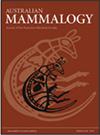影响鸭嘴兽被人类垃圾缠绕频率和结果的因素
IF 1.2
4区 生物学
Q3 ZOOLOGY
引用次数: 0
摘要
鸭嘴兽的锥形和底栖觅食习惯使它容易被塑料、橡胶或金属垃圾的环状或环状缠住。根据维多利亚州现场诱捕调查中记录的54起垃圾缠绕案例,物品可能围绕颈部(68%)、躯干(8%)、下巴(2%),或者从肩膀前面到另一侧前腿后面(22%)以带状包裹。大墨尔本地区的纠缠频率是维多利亚地区的8倍,一岁幼兽的纠缠频率明显高于年长动物,成年/亚成年雌性动物的纠缠频率也明显高于成年/亚成熟雄性动物。从尸体或获救动物身上找到的物品,如果没有人类干预,不太可能存活下来,包括弹性发带、钓鱼线、医院识别腕带、发动机垫圈和食物罐中的塑料密封圈;所有这些东西都穿透了皮肤,(在大多数情况下)深深地进入了下面的组织。据估计,居住在大墨尔本地区的鸭嘴兽和居住在维多利亚地区的鸭嘴兽中,高达1.5%的鸭嘴虎在任何时候都有与纠缠相关的伤害或死亡风险。本文章由计算机程序翻译,如有差异,请以英文原文为准。
Factors affecting the frequency and outcome of platypus entanglement by human rubbish
The platypus’s tapered shape and benthic foraging habits predispose it to becoming entangled in encircling rings or loops of plastic, rubber or metal rubbish. Based on 54 cases of litter entanglement recorded in Victorian live-trapping surveys, items may encircle the neck (68%), torso (8%), jaw (2%) or be wrapped bandolier-fashion from in front of a shoulder to behind the opposite foreleg (22%). Entanglement frequency was eight times higher in the greater Melbourne region than in regional Victoria, and was significantly greater in first-year juveniles than in older animals and also in adult/subadult females compared with adult/subadult males. Items recovered from carcasses or from rescued animals that were unlikely to have survived without human intervention included elastic hair-ties, fishing line, a hospital identification wristband, an engine gasket and a plastic ring seal from a food jar; all of these items had cut through skin and (in most cases) deeply into underlying tissue. Up to 1.5% of the platypus residing in the greater Melbourne area and 0.5% of those living in regional Victoria are estimated to be at risk of entanglement-related injuries or death at any point in time.
求助全文
通过发布文献求助,成功后即可免费获取论文全文。
去求助
来源期刊

Australian Mammalogy
ZOOLOGY-
CiteScore
2.50
自引率
8.30%
发文量
26
期刊介绍:
Australian Mammalogy is a major journal for the publication of research in all branches of mammalogy. The journal’s emphasis is on studies relating to Australasian mammals, both native and introduced, and includes marine mammals in the Antarctic region. Subject areas include, but are not limited to: anatomy, behaviour, developmental biology, ecology, evolution, genetics, molecular biology, parasites and diseases of mammals, physiology, reproductive biology, systematics and taxonomy.
Australian Mammalogy is for professional mammalogists, research scientists, resource managers, consulting ecologists, students and amateurs interested in any aspects of the biology and management of mammals.
Australian Mammalogy began publication in 1972 and is published on behalf of the Australian Mammal Society.
 求助内容:
求助内容: 应助结果提醒方式:
应助结果提醒方式:


